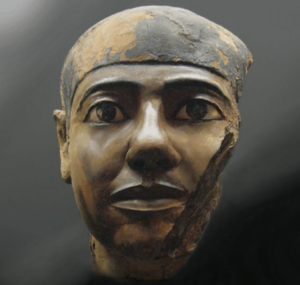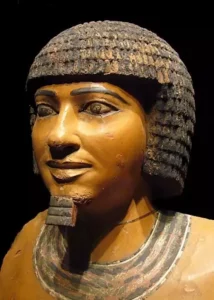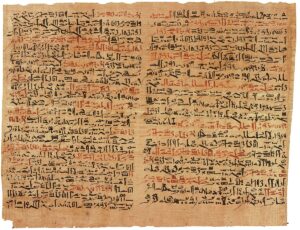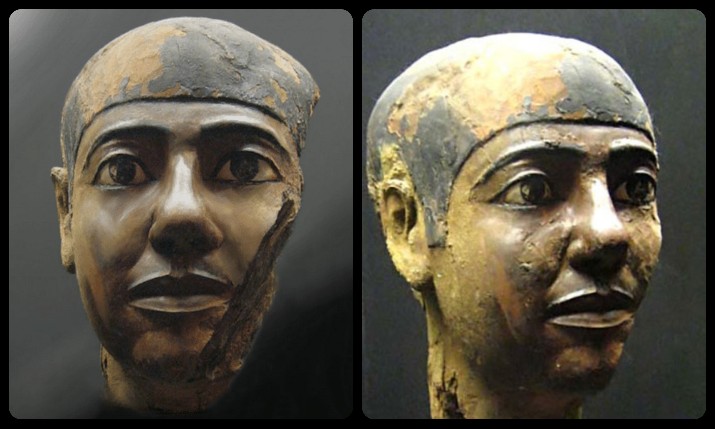The Greek physician known as Hippocrates is popularly referred to as the father of medicine but that’s not very correct. It would amaze you to know over 2000 years before Hippocrates was conceived, there was a Black Egyptian known as Imhotep, who was practicing medicine and also wrote medicine books.
Imhotep was a genius, he contributed immensely to humanity and different fields of study which includes architecture, engineering and medicine.
Imhotep is one of the most intelligent humans to ever walk the face of the earth, he is known for his notable architectural drawings which was used to build many magnificent structures including one of the Seven Wonders of the Ancient World, the Great Pyramids of Egypt. In this article, we’ll tell you more about Imhotep, the African father of medicine.

Imhotep’s era was during the third dynasty of old Egypt. Pharoah Djoser was the ruler during his time. Imhotep occupied different positions during his lifetime. He practiced as a mathematician, an astronomer, a writer, a priest, a physician and even a philosopher. This genius was born in Gebelin which is south of Egypt’s capital, Thebes. Kanofer, Imhotep’s father, was an architect and his mother was said to be the human daughter of the Egyptian ram god know as Banebdjedet.
The journey to fame for Imhotep started at the temple of Ptah where he served as a priest. People always referred to Imhotep as the son of Ptah. Ptah is an ancient god who people usually prayed to for good health. There was no previous ties of royalty with Imhotep but he rose to prominence during Djoser’s reign, where he served as an advisor and a chancellor.
Imhotep was very intelligent, he had vast knowledge in many subjects ranging from artistry, engineering, anatomy, architecture and medicine. During the reign of King Djoser, many technological advancements were realised. These advancements served as perfect platform for Imhotep to thrive, due to the fact that he was multi-talented. His intelligence rose him to power until he occupied the highest position that a palace official could occupy, the position of the ‘Vizier’.

While holding the post of a Vizier, Imhotep was placed in charge of everything that concerns the kingdom ranging from their treasury, to judiciary, religious matters, agriculture, politics and so much more. Imhotep was the second in command to the king. Back then, Egyptian Viziers were believed to have magical powers, this is why the office is also termed as “the supervisor of what the Heavens brings, what the earth creates and what the Nile brings”.
During his reign as Vizier, one of his exceptional achievements was when he helped Pharoah to stop a famine which had lasted for 7 years. Imhotep was said to have advised the king on how to appease their Khnum god, which led to the end of the famine. There are speculations that he wrote the document that led the Edwin Smith Papyrus manuscript.
The Edwin Smith Papyrus

This is a medical manuscript that was purchased by Edwin Smith, a popular antique dealer in the year 1862. They named this manuscript after its buyer, it was written in Egyptian hieroglyphics.
This manuscript contained so many details about surgery procedures, and how to perform surgery on tumours, wounds and so much more. There were titles, outlined steps for easy understanding. These outlined steps are still used today in our modern day medicine for diagnosing ailments and examining patients.
Back then, ailments were categorised according how severe they were.
The document also has anatomical descriptions as well as physiological treatment processes for various wounds. The processes includes suturing, bandaging and the treatment of infections with natural products like resins and honey.
Many of the processes in this document has been the basis for many pharmaceutical research in recent times. Even the medical and surgical knives used today have maintained the structure of the previous designs used by ancient Egyptians.
This manuscript was first interpreted from its original version to English by James Henry, a popular American historian. James described the great Imhotep as a patron spirit of scribes to whom they poured libations before they commenced work. Imhotep wrote so many manuscripts in science, religion, architecture, poetry and so much more. He lived his life promoting peace, cheerfulness and contentment. There are no original copies of his works anymore but many writers still refer to him.
Imhotep was said to have written books in architecture which has served as a guide for many architects later. He was later referred to as a demigod a century after his death and was later referred to as the god of medicine 2000 years after his death.
Imhotep was a very important man to King Djoser to the extent that his name was inscribed on the king’s throne and many other statues.
Nobody knows where the burial tomb of Imhotep is located but historians believe that it’s hidden somewhere inside the Djoser pyramid of Saqqara. This was depicted in the 1932 movie titled “The Mummy” and the 1999 sequel where his character was portrayed as a false god. Many of his loyalist where not happy with the way he was portrayed in this movie but nothing has been done to correct it.
